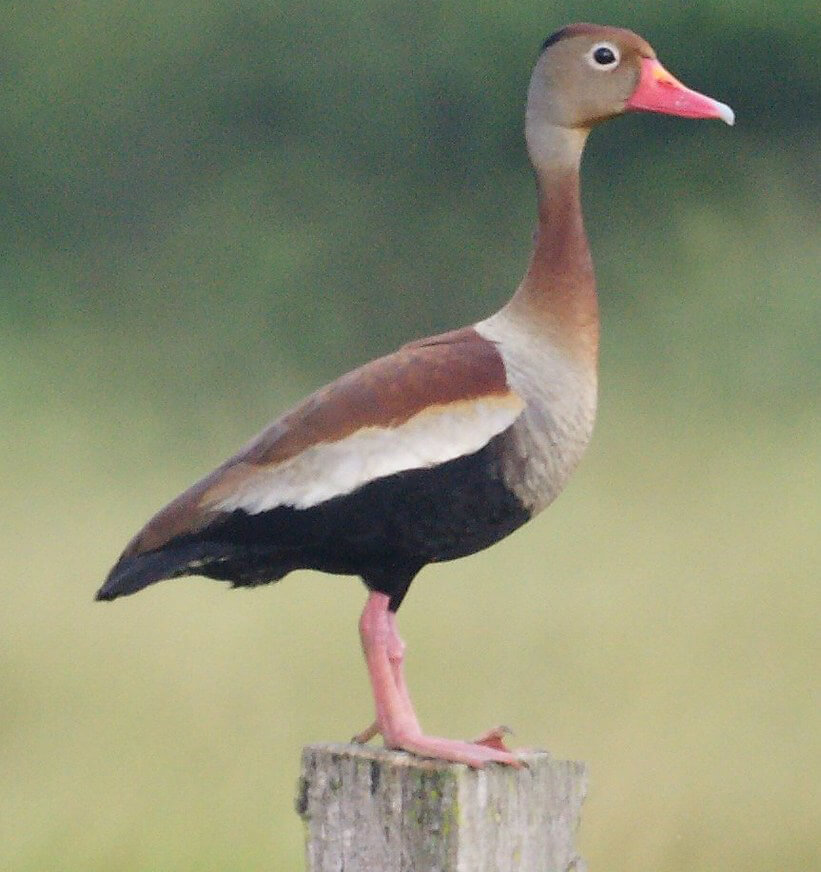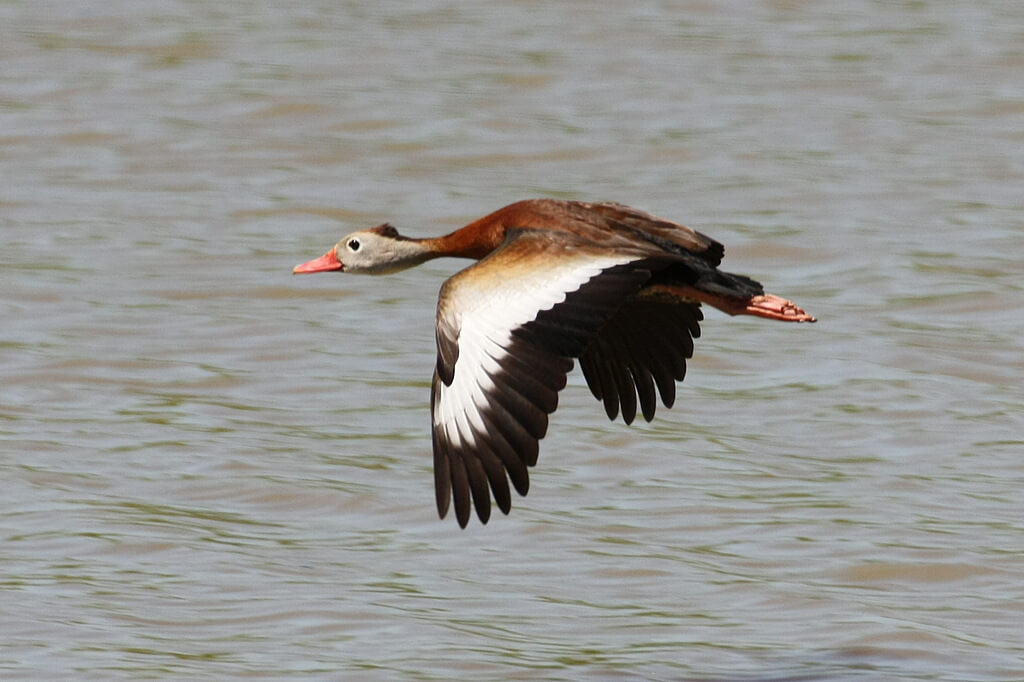There was a time when my husband, Gren, and I would grab binoculars and spotting scope, field guide and map, and head off on foot or bike through woods and marsh to see what birds we could see.
Nowadays, we don’t expend the same amount of energy to see birds. We’ve become lazy birders.
Part of the reason is because we’ve seen most everything we can expect to see around here, so while we love seeing our old bird friends, we’re less willing to jump through lots of hoops to do that.
The other part is, well, we’re lazy.
But, if there’s an easy way to see something new — to add to our life list — or something unusual, we’re all for it.
The latest chance for a good sighting was a Black-bellied Whistling Duck.
My eBird rare bird email alert for Delaware reported that Black-bellied Whistling Ducks were spotted at Wheatley Pond in Clayton, Del., on March 13. Well, we’d never seen those ducks.
The Black-bellied Whistling Duck is a handsome, slender, long-necked duck with a bright pink to red bill, legs, and feet. Its body is mostly chestnut, with a grey head and (wait for it) black belly. These are dabbling ducks that love to also eat grain. They gather in noisy flocks and whistle! Unlike most ducks, they perch and nest in trees. Their usual range is Florida, Texas, Louisiana, and Central America.

The first element in successful lazy birding is to know what to look for, and where. The eBird rare bird alert not only told us what to look for, but made the Black-bellied Whistling Duck’s reported location very clear. The sighting notes said that the ducks were on a lawn with multi-colored pinwheels, behind a house that backs up to the pond. How hard could that be, to find the pinwheels and then the ducks?
The second element for lazy birding is ease of access. In this case, Wheatley Pond is right on Rte. 300, a fairly big road — no hiking, no slogging, no tramping. Theoretically, all we needed to do was drive to the pond, pull up and get out of the vehicle, and find the birds in the binoculars. Easy peasy, right?
So on March 14 we grabbed our binoculars, got into the truck, and headed to Kent County, Del.
We had a delightful drive through both rural Kent counties and found our way to the pond. Only somewhat intimidated by the NO TRESPASSING signs on the 20 feet of land owned by the pond association between the road and the pond, we pulled over onto the shoulder and exited the truck. We searched the edges of the pond through the binoculars, looking for the pinwheels.
We found the pinwheels and the lawn and scanned the grass and pond edge for ducks. And scanned again. And again. But we were disappointed. There were no Black-bellied Whistling Ducks to be found. No ducks of any kind, actually. Disappointed, we went on our way.
The next morning, the Delaware rare bird alert reported Black-bellied Whistling Ducks at Wheatley’s Pond from the previous day! They had been hiding from us! So we went back.
This time we scanned the edges of the pond all around, in case they’d moved from the pinwheels, and finally found them down by the pinwheels. We didn’t get a good look, but we saw a small group of seven or eight ducks with rusty-colored bodies and backlit, brilliant red legs and feet glowing in the sunlight. They flew out from the bank over the pond, turned around, and flew back to hide in some brushy undergrowth. We saw the Black-bellied Whistling Ducks!

Granted, if we hadn’t known they were there, there is no way we could have identified them. But knowing what we did, we made the call. And added them to our Life List.
Not bad for a couple of lazy birders.
Cover photo: Flock of Black-bellied Whistling Ducks in flight.
Photo: Wikimedia Commons

